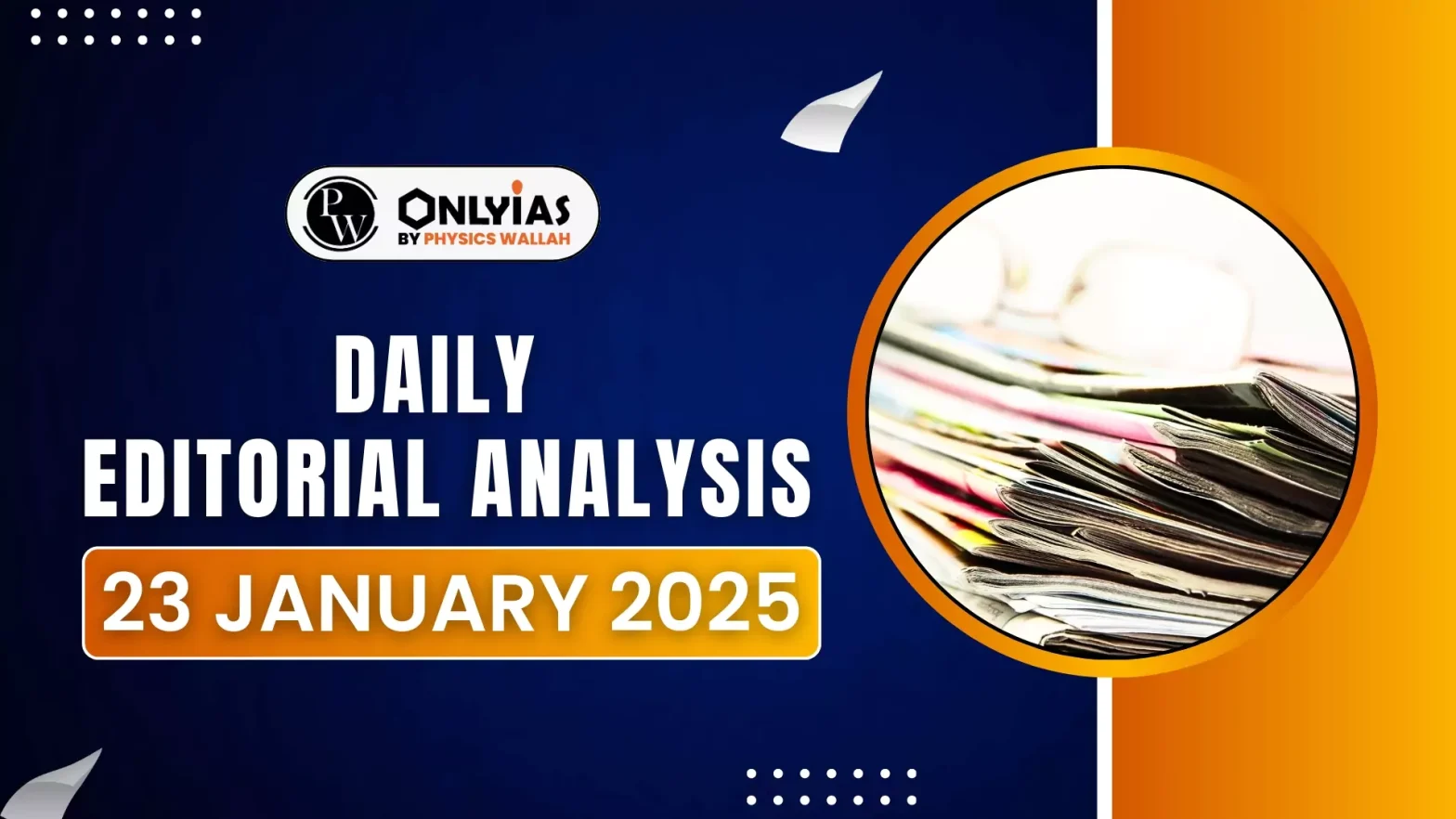Recently, China expanded its export control list by including 28 U.S. entities, restricting access to critical minerals vital for high-tech industries like aerospace, semiconductors, and electronics.
What are Critical Minerals?
- These are the minerals which are essential for economic development and national security but the scarcity and limitation of its geographical availability leading to supply chain vulnerability and disruption constitute its criticality.
- These minerals are now used everywhere, from making mobile phones and computers to batteries, electric vehicles, and green technologies like solar panels and wind turbines.
- Critical minerals can be used for Military and civil purposes both.
Enroll now for UPSC Online Course
China’s Strategic Mineral Export Controls
- Restricted list of Minerals : Tungsten, gallium, magnesium, beryllium, hafnium, lithium-6 (isotope), etc.
- Calculated Approach: China targets minerals critical to Western nations and their allies, especially for semiconductors, batteries, and high-tech manufacturing.
- Constraining Factors: China avoids controlling minerals where it relies on Western imports for raw materials. China ensures no disruption to domestic industries or export-dependent sectors.
- Weaponisation of Critical minerals: Rare Earth Minerals Embargo (2010) was Imposed on Japan, showcasing China’s use of mineral exports as a geopolitical tool.
- Minerals such as antimony, gallium, and germanium were restricted in line with strategic goals.
- China banned Rare Earth Technologies in December 2023 and prohibited the extraction and processing technologies for rare earths to consolidate domestic dominance and control global supply chains.
- Global Concerns: Policymakers in the United States and other nations are increasingly worried about the rising competition for critical minerals, which are essential for high-tech industries, batteries, and semiconductors.
- This competition is now a fulcrum of international economic diplomacy, influencing trade, geopolitics, and technology dominance.
- Implications for India: India needs to improve its domestic mineral exploration and production capacity to reduce reliance on imports and strengthen its resource security.
- Enhancing self-reliance in critical minerals is crucial for economic growth and national security.
Steps taken by Indian Government to Promote Critical Minerals
- Identification of Critical Minerals: The Ministry of Mines has identified 30 critical minerals vital for national security and industrial growth.
- Formation of KABIL: Khanij Bidesh India Ltd. (KABIL) was established to secure overseas investments in critical minerals like lithium and cobalt.
- Legislative Reforms: Mines and Minerals (Development and Regulation) Amendment Act, 2023 lifted restrictive classifications on rare earth elements previously considered ‘atomic minerals.’
- The Act Aimed to attract private-sector investment and facilitate technology sharing.
Key Provisions of Mines and Minerals (Development and Regulation) Amendment Act, 2023
- Introduction of the Exploration License: Designed to attract specialized resource exploration agencies, including foreign companies.
- Allows firms to focus solely on reconnaissance and prospecting without committing to full-scale mining operations.
- Encourages participation in geologically challenging deposits.
- Incentives for Exploration Firms: 50% reimbursement of exploration expenditure once mining begins, aimed at de-risking early-stage operations.
Check Out UPSC CSE Books From PW Store
Challenges in India’s Critical Minerals Development
- Limited Market Interest: The discovery of lithium deposits in Jammu and Kashmir’s Reasi district in 2023 was seen as a breakthrough for India’s energy transition.
- Over a year later, no company has bid for these resources, leaving the block in limbo.
- Low Auction Success Rate: Government data shows only 48% of mineral blocks (24 out of 49) have been successfully auctioned in recent years.
- Limited Issuance of Licenses: Only a few exploration licenses for minerals like lithium, rare earth elements, and graphite have been cleared. Most licenses have been allocated to Indian public sector firms, with minimal foreign participation.
- Stalled Auctions: Auctions for critical minerals have seen limited interest, further slowing the development of the sector.
- Outdated Resource Classification System: India’s resource classification system lacks alignment with international norms (G1-G4 levels).
- Incomplete geological data on ore grade and quantity increases the risk for potential bidders, leaving many blocks commercially unviable.
- Low Demand for Exploration Licenses: Despite their intent to de-risk investments, exploration licenses have failed to attract significant interest.
- Lack of Robust Surveys: Without robust geological surveys, many mining companies may discount their offers or abstain from bidding altogether. This results in valuable mineral blocks being ignored during auctions.
Exploration Levels Explained
| Level |
Description |
Key Characteristics |
| G4 |
Reconnaissance Stage |
- Initial, broad-level exploration.
- Aimed at identifying areas with mineral potential.
- Low confidence in data.
|
| G3 |
Preliminary Exploration Stage |
- Systematic exploration starts.
- Basic geological surveys and sampling conducted.
- Moderate confidence in data.
|
| G2 |
General Exploration Stage |
- Detailed exploration of identified mineralized zones.
- Drilling, trenching, and sampling for grade estimation.
|
| G1 |
Detailed Exploration Stage |
- Most advanced stage.
- Data is precise enough to define reserves.
- Mining viability is evaluated.
|
Way Forward
- Upfront Fiscal Incentives: To combat these challenges, a potential remedy is to implement larger upfront fiscal incentives during the exploration phase.
- This approach could be modeled after semiconductor fabrication projects, where significant initial investments are supported by government backing.
- Direct Capital Support: India has adopted a proactive strategy by pledging direct capital support during the early stages of construction for critical minerals projects.
- This model aims to offset immediate exploration costs, encouraging greater participation in the sector and enhancing the overall efficiency of mineral resource management.
Enroll now for UPSC Online Classes
Conclusion
Upfront capital support for exploration would resolve a market failure and help unlock value many times over in downstream mining, exploration, sales, and exports.
Ready to boost your UPSC 2025 preparation? Join PW’s UPSC online courses today!
![]() 23 Jan 2025
23 Jan 2025

